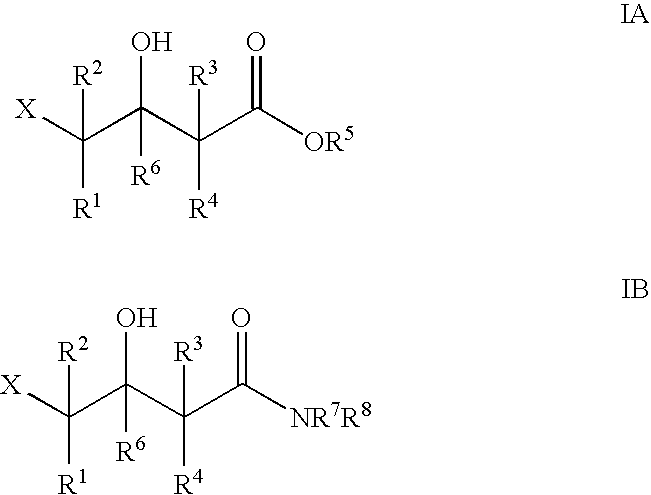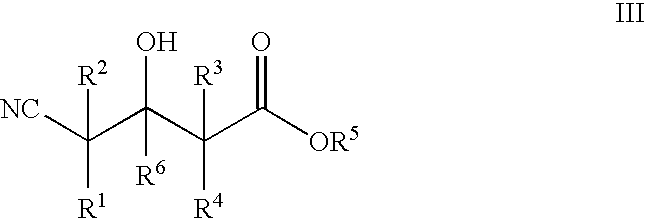Enzymatic processes for the production of 4-substituted 3-hydroxybutyric acid derivatives
a technology of hydroxybutyric acid and cyano-3-hydroxybutyric acid, which is applied in the direction of hydrolases, fermentation, etc., can solve the problems of increased yield loss, troublesome operation of distillation, and dramatic overall loss of (r)-4-cyano-3-hydroxybutyric acid production,
- Summary
- Abstract
- Description
- Claims
- Application Information
AI Technical Summary
Problems solved by technology
Method used
Image
Examples
example 1
Construction of Expression Constructs for Expression of Halohydrin Dehalogenase, Ketoreductase, and Glucose Dehydrogenase
(1) Halohydrin Dehalogenase (HHDH)
[0172]The gene for the halohydrin dehalogenase was codon optimized for expression in E. coli based on the amino acid sequence of the halohydrin dehalogenase from Agrobacterium sp. The gene was synthesized using 60-mer oligomers, and cloned into expression vector pCK110700 (depicted in FIG. 2) under the control of a T5 promoter. The vectors were transformed into E. coli TOP10 (Invitrogene, Carlsbad, Calif.) from which plasmid DNA was prepared using standard methods. The plasmid DNA was then transformed into E. coli BL21 (Stratagene, La Jolla, Calif.), the expression host, using standard methods. Several clones were found in the expression library that expressed active HHDH. The genes from these clones were sequenced (see SEQ ID Nos: 13 (HHDH.1), 15 (HHDH.2), and 17 (HHDH.16) which encode polypeptide sequences SEQ ID Nos. 14, 16, an...
example 2
Production of Enzyme
(1) HHDH Enzyme:
[0178]In an aerated agitated fermentor, 10.0L of growth medium containing 0.528 g / L ammonium sulphate; 7.5 g / L of di-potassium hydrogen phosphate trihydrate; 3.7 g / L of potassium dihydrogen phosphate; 2 g / L of Tastone-154 yeast extract; 0.05 g / L ferrous sulphate; and 3 ml / L of a trace element solution containing 2 g / L of calcium chloride dihydrate, 2.2 g / L of zinc sulfate septahydrate, 0.5 g / L manganese sulfate monohydrate, 1 g / L cuprous sulfate heptahydrate: 0.1 g / l sodium borate decahydrate and 0.5 g / L EDTA, was brought to a temperature of 30° C. The fermentor was inoculated with a late exponential culture of Escherchia coli BL21 (Stratagene, La Jolla, Calif.) equipped with plasmid containing HHDH polynucleotides as described in Example 1, then grown in a shake flask containing LB, 1% glucose (Sigma Chemical Co., St. Louis, Mo.), and 30 μg / ml chloroamphenicol (Sigma Chemical Co., St. Louis, Mo.) to a starting optical density at 600 nm (OD600) of...
example 3
Enzyme Preparation
(1) Ketoreductase
[0185]The cell paste was washed by suspending 1 volume wet weight of cell paste in 3 volumes of 100 mM Tris / sulfate (pH 7.2) followed by centrifugation at 5000 g for 40 minutes in a Sorval 12BP. The washed cell paste was suspended in 2 volumes of 100 mM Tris / sulfate (pH 7.2). The intracellular KRED was released from the cells by passing the suspension through a homogenizer in two passes using a pressure of 14,000 psig for the first pass and 8,000 psig for the second pass. The lysate was warmed to room temperature, then a 10% w / v solution of polyethyleneimine (PEI), pH 7.2, was added to the lysate to a final PEI concentration of 0.75% w / v and stirred for 30 minutes. The treated homogenate was centrifuged at 10,000 rpm in a Beckman lab centrifuge for 60 minutes. The supernatant was decanted and dispensed in shallow containers, frozen at −20° C. and lyophilized.
[0186]The cell paste was washed by suspending 1 volume wet weight ...
PUM
| Property | Measurement | Unit |
|---|---|---|
| Substance count | aaaaa | aaaaa |
| Substance count | aaaaa | aaaaa |
| Substance count | aaaaa | aaaaa |
Abstract
Description
Claims
Application Information
 Login to View More
Login to View More - R&D
- Intellectual Property
- Life Sciences
- Materials
- Tech Scout
- Unparalleled Data Quality
- Higher Quality Content
- 60% Fewer Hallucinations
Browse by: Latest US Patents, China's latest patents, Technical Efficacy Thesaurus, Application Domain, Technology Topic, Popular Technical Reports.
© 2025 PatSnap. All rights reserved.Legal|Privacy policy|Modern Slavery Act Transparency Statement|Sitemap|About US| Contact US: help@patsnap.com



